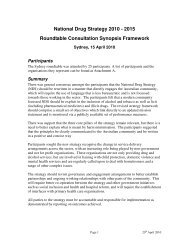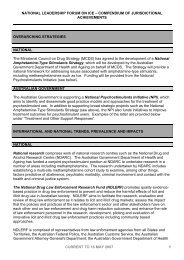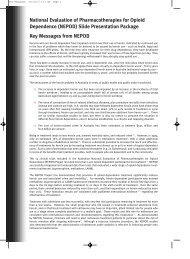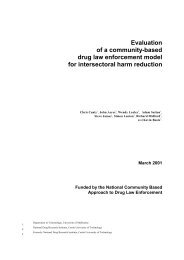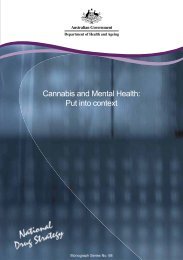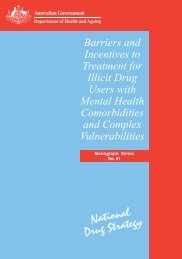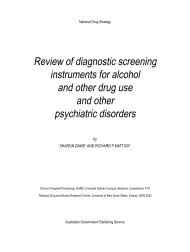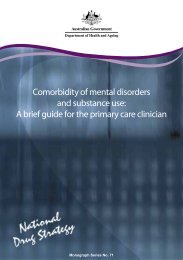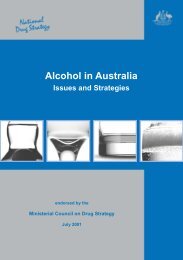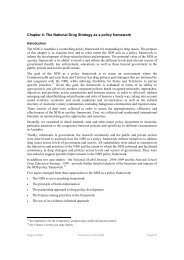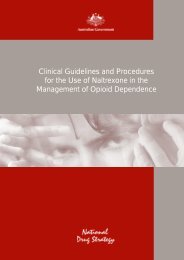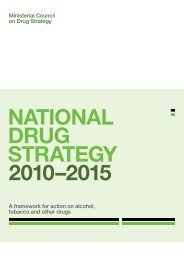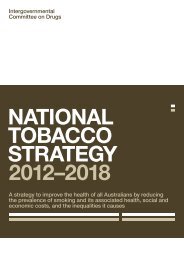Submission by Imperial Tobacco Australia Limited (PDF 600 KB)
Submission by Imperial Tobacco Australia Limited (PDF 600 KB)
Submission by Imperial Tobacco Australia Limited (PDF 600 KB)
You also want an ePaper? Increase the reach of your titles
YUMPU automatically turns print PDFs into web optimized ePapers that Google loves.
5.5 Action Item 6.5.11<br />
ITA does not seek to have its products used in entertainment media, nor does it directly<br />
provide its products for such use.<br />
We believe that this is an area that should be left to the discretion of the director or<br />
producer. The creative sector should not be regulated in such a manner and artistic<br />
independence should remain.<br />
6 PART 6.6<br />
Priority Area 6: Considering Further Regulation of the Contents, Product Disclosure<br />
and Supply of <strong>Tobacco</strong> Products and Non Therapeutic Nicotine Delivery Systems<br />
ITA believes that current state and federal government regulation of the ingredients which<br />
may be included in tobacco products is adequate. ITA complies fully with all such<br />
regulations. The article cited in the submission in support of the statement, “Additives<br />
such as sugar, honey, liquorice and cocoa are used to enhance the “taste” of tobacco<br />
smoke to make the product more desirable to smokers especially those experimenting with<br />
tobacco” was written in 1999 and is out of step with <strong>Australia</strong>n legislation. Further, it is a<br />
document prepared <strong>by</strong> the anti-tobacco lob<strong>by</strong>, not an independent scientific paper and<br />
contains numerous unverified assertions and should be weighted accordingly. Since<br />
2008, many <strong>Australia</strong>n state and territories have banned fruit and confectionery flavoured<br />
cigarettes or flavours, which prevents such additives being used. In compliance with this<br />
regime, ITA does not market confectionery flavoured tobacco products, or novelty tobacco<br />
products. Further, ITA does not add anything to its products to make it more difficult to<br />
stop smoking, to make our products attractive to children or to increase the level or change<br />
the chemical form of nicotine in tobacco smoke.<br />
However, to ensure the proper functioning of a market economy, legitimate tobacco<br />
companies have the right to fair competition <strong>by</strong> developing and differentiating their<br />
products to support adult consumer choice.<br />
Detailed listing of the ingredients contained in cigarettes would be of little importance to<br />
the average consumer who has no detailed knowledge of chemistry. However, disclosure<br />
may result in trade secrets being revealed to competitors, including those who trade in<br />
illicit tobacco products. Were the government to require detailed mandatory disclosure of<br />
ingredients in cigarettes, ITA would strongly urge the government to protect the<br />
commercially sensitive information from being released to the public. Legislative measures<br />
must meet accepted principles of better regulation; that is based on objective evidence, be<br />
targeted and proportionate.<br />
We note that in <strong>Australia</strong> the industry voluntarily submits an ingredients disclosure<br />
annually to the Department of Health and Ageing. This information is available to the<br />
public on the Department‟s website.<br />
ITA draws attention to the DoHA January 2009, Public Health Value of Disclosed Cigarette<br />
ingredients & Emissions Data (2009 Report). The 2009 Report concluded that “it is<br />
unlikely that the health of <strong>Australia</strong>n has been directly promoted or protected through<br />
making information about the ingredients and emissions available to the public under the<br />
9



